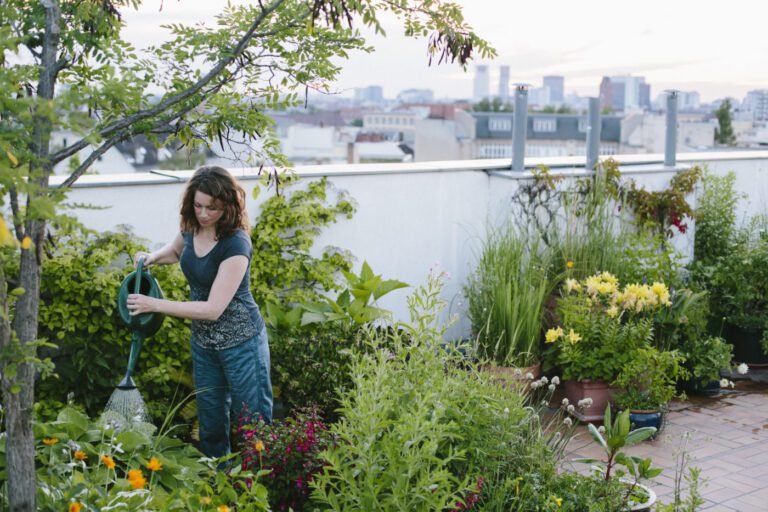The Best Backyard Chickens Forum
Backyard Chickens has become the number 1 resource for anyone who wants to own chickens: the egg-laying bird that makes you breakfast and the occasional Sunday dinner!
BYC, or the BackYard Chickens, has loads of amazing information on all features of chicken keeping, combined with an abundance of knowledge and experiences shared by the community members. If your question isn’t answered in the Learning Center Articles, there will be an answer on the chicken discussion forum.
The website has all sorts of information that will help you begin your journey of chicken owning and maintaining by covering the basics of raising hens.
First, let’s go over a bit of the history of the Backyard Chickens.
History:
Similar to the practice of thousands of other children and families, what started as a fun task became a hobby and developed into an obsession! BackYardChickens is the outcome of years of shared learning and fun bundled into the best resources for raising your backyard chicken flock.
Over the past few years, people have appeared to want to be more economical, independent, and self-sufficient and participate in the “go green” movement. A couple of egg-laying hens in a moderately small backyard allow people to partake in these trends without moving or completely changing their lifestyle. BackYard Chickens promotes self-sufficient, grow-local, and green movements by teaching people how to raise chickens correctly.
The Forum:
As the site’s subject matter has grown and evolved, so have the website visitors coming to a lot of questions. Everything from “How to hatch eggs?” and “How to raise chickens?” to “How do I keep my chickens healthy?” and “How do I build a chicken coop?” The creators tried to answer as many questions as they could by adding information to the website. Still, they realized there were too many diverse variables to create content for every unique situation.
So, in the early 2000s, they started the first Chicken Forum. Throughout the years, this forum has evolved, moved, altered, and continued to develop and mature based on the needs of the website visitors. When revising this page, BYC has an energetic community of more than 325,000 chicken keepers who add around 6,000 new posts daily!
The progress toward raising backyard hens and the quality and quantity of information gathered on the website have greatly surpassed many original anticipations. BYC now boasts an extensive chicken breed database, over 2,500 chicken coop designs, and a fantastic chickens learning center. The site has become the number 1 resource for anyone interested in caring, raising, and breeding for their flock of backyard fowls.
You will enjoy your time there! You can just turn to the Chicken Forum if you have questions or comments. The Chicken Forum is one of the friendliest message panels, and you will get many great answers to any queries you might have.
How to Raise Backyard Chickens – The Complete Guide
Families across the world are joining the backyard flock uprising. With some chicks, a coop, and a long-standing plan of action, a backyard flock produces fresh, wholesome eggs for families and provides them the enjoyment of watching a cute little baby chick grow into an adult hen. The initial step in establishing a backyard flock is crafting a plan.
Some Things to Consider Before Getting Chickens:
First, check local town decrees to ensure that keeping chickens are allowed in your area or if there is a limit to the number of hens you can keep at one time. You don’t want to invest time, money, and energy into preparing for chickens only to find out that you can’t even keep them in your backyard!
Make sure you have the space for a full-size chicken coop or a henhouse. It has to hold a nest box, a feeder, a roosting area, water containers, and for every three hens. A proper hen coop should be large enough to stand straight to shovel manure and gather eggs comfortably, but a simple henhouse can be small. Also, any housing must be strong enough to protect your chickens from predators.
In this article, we’ve explained how you can build a chicken coop in your backyard.
The short version is:
Chickens need water and food daily. Feed prices vary depending on your area and the quality of the feed, but they are generally not very expensive. How long a bag of feed lasts depends on the number of hens you have in your backyard.
Hens will lay eggs through summer and spring and well into fall as long as they get enough sunlight, which is generally 12 to 14 hours. You can collect eggs daily or sometimes even twice daily, although you will have to clean up after your chickens throughout the year.
If you go on vacation, you must arrange for a reliable chicken sitter.
Steps on How to Start Raising Chickens:
We can gain a lot from a backyard flock. Chickens can produce truly fresh eggs and flavorful, healthy meat. And we can enjoy watching our birds from the back porch and teaching our children duties and how animals grow.
Before buying new chicks this spring, here are six tips on raising chickens.
- Select the breed that’s right for you.
Poultry breeds come in various colors, shapes, and sizes. Families who want to produce meat or eggs should start with the most common breeds of chickens.
Difference between various chicken breeds:
From egg production to regal plumage, nine breeds are considered among the most prized varieties of backyard chickens.
- Australorp
- Araucana
- White Leghorn
- Buff Orpington
- Plymouth Rock
- Sussex
- Marans
- Silkie
- Rhode Island Red
Decide and plan what you want to gain from your flock of backyard hens. If you want fresh eggs, you should consider: White Leghorn hybrids, which produce white eggs; Plymouth Barred Rocks, which produce brown eggs; Rhode Island Reds, which also give brown eggs; Blue Andalusians which give white eggs or Ameraucanas/Easter Eggers, which produce blue eggs.
Cornish Cross chickens grow rapidly and are best suited for producing meat. If you’re hoping to produce meat and eggs, you should consider dual-purposed breeds like Buff Orpingtons, Plymouth Barred Rock, or Sussex. Exotic breeds are best to keep as pets or for show.
- Decide the number of birds you’d like to have in your backyard:
Your flock goals and local ordinances may determine the gender and number of birds in your backyard flock. Keep in mind that young chicks grow into adult birds. You must make a budget for the following:
- The housing your birds will need.
- The time you will spend with your flock.
- How you’ll collect and manage the eggs.
- And what you plan to do with the birds after they stop laying eggs.
After this, you can start small with 4 to 6 chicks.
Will you need a rooster?
No! It’s a common misunderstanding that you need a rooster for a chicken to lay eggs. The fact is that a male is required only if you want to breed your chickens; i.e., you want the eggs fertilized to hatch as baby chicks. While waking up in the morning to a country call of a rooster may sound delightful, having a rooster in your backyard flock is not recommended because it can become violent to people and hens. You should also be aware that determining the gender of a baby chick is complex, and accidents happen.
- Research a trustworthy chick supplier.
You can consider purchasing chicks from a credible hatchery. To prevent possible disease problems, you must ensure the hatchery has vaccinated chicks for coccidiosis and Marek’s Disease.
Buying chicks on the web is a safe way to bring chickens home. But we also advise you to only purchase from a hatchery that has been certified by the National Poultry Improvement Plan. Local farm-supply stores also seasonally have chicks available, although they usually have fewer breed varieties.
Hens don’t start laying eggs until they are between 20 and 24 weeks old. If you don’t wish to wait that long, you can consider a “started pullet,” a chicken that’s 15 to 22 weeks old. Once familiar with her new surroundings, the hen will immediately begin laying eggs.
- Prepare your brooder.
It would be best to keep baby chicks in a draft-free, warm shelter, a brooder. The brooder should have a heating lamp and be completely bounded with a bottom surface that you can wrap with bedding. Avoid having square corners in the brooding area to stop chicks from being stuck in the corner if the birds huddle in one area.
Every chick needs at least 2 to 3 feet of floor space for six weeks. Fix the brooder temperature to 90 degrees Fahrenheit for week 1 and then slowly reduce heat by 5 degrees Fahrenheit every week until reaching at least 55 degrees Fahrenheit. You must arrange a clean and spacious coop ready for the chicks once they added heat source is no longer needed. Through all the stages, always provide your chicks with abundant clean fresh water that is changed regularly.
Whether you flock toward a French château or a rustic red barn, there are the six important elements needed for a happy and safe henhouse.
Nesting Box:
Hens crave darkness and privacy when laying eggs, so you plan for at least one nesting container for every four to five hens. A box that measures 14 inches wide, 14 inches in height and 12 inches in diameter will provide even a large hen with plenty of room. Add a door along the external wall of each box for easier egg gathering.
Box Bedding:
A soft, inexpensive material such as pin shavings or hay offers easier cleaning and a comfortable spot. To keep things fresh, you can even mix in a bedding blend.
Roosting Bar:
Chickens choose to sleep high off the ground. You must provide them with a perch with a wooden roosting bar. Wood is usually preferable to metal or plastic as they are too slippery for the chickens to grasp properly.
Dropping Board:
This term refers to a box, board, or pan placed below the roosting bar to gather and hold manure, making routine cleanups easier.
Hanging Waterer and Feeder:
Keep the water and feed bowls or containers off the ground to maintain freshness, and place them inside the coop to keep out unwanted animals.
Enclosed Run:
Give your hens a spot to stretch their legs while also staying sheltered and safe from predators. Use metal screening or hardware cloth with at least a 1.2 mm gauge to ensure durability and strength.
- Focus on cleanliness.
Before new chicks arrive in your backyard – and throughout the development process – keep their surroundings clean. Young chicks are vulnerable to early health risks, so sterilize all materials before use and then weekly.
The correct household antiseptics can work well. Carefully read the directions to ensure your sterilizer is safe and should not leave a residual coating on any material. A mixture of 90 percent water and 10 percent bleach can work fine if the cleaner is thoroughly rinsed after cleaning.
- Create a long-term nutrition plan.
Strong chicks result in healthy chickens. For long-term success, you can follow programs available online from an authentic website or consult your local farms.
What do chickens consume?
While your eggs may soon be homegrown, your hens’ diet shouldn’t be. A poultry science nutritionist has devised an industrially prepared layer of puree or mush. It will have enough protein, calcium, and calories to keep a chicken healthy and guarantee an excellent thick eggshell.
While we encourage occasional treats, such as watermelon or mealworms, the majority of a hen’s diet must come from commercial goods. The abundance of fresh water is vital because chicken eggs are primarily composed of water, which is directly tied to the production of eggs. Mix in a splash of apple cider vinegar every couple of days a week to prevent bacteria.






